Import and edit existing scores and tabs
Easily import your existing sheet music and tablatures into Flat for Education to edit, share, and collaborate with your students. Our platform supports a wide range of file formats, making it simple to get started.
1. Import PDF
How to import a PDF score with Flat for Education
You can easily import a PDF of your sheet music and turn it into an editable score. Our technology automatically converts the PDF into a fully editable file, saving you time and effort.
To import your PDF, go to your My Library, click on "New score" and then "Import PDF.".
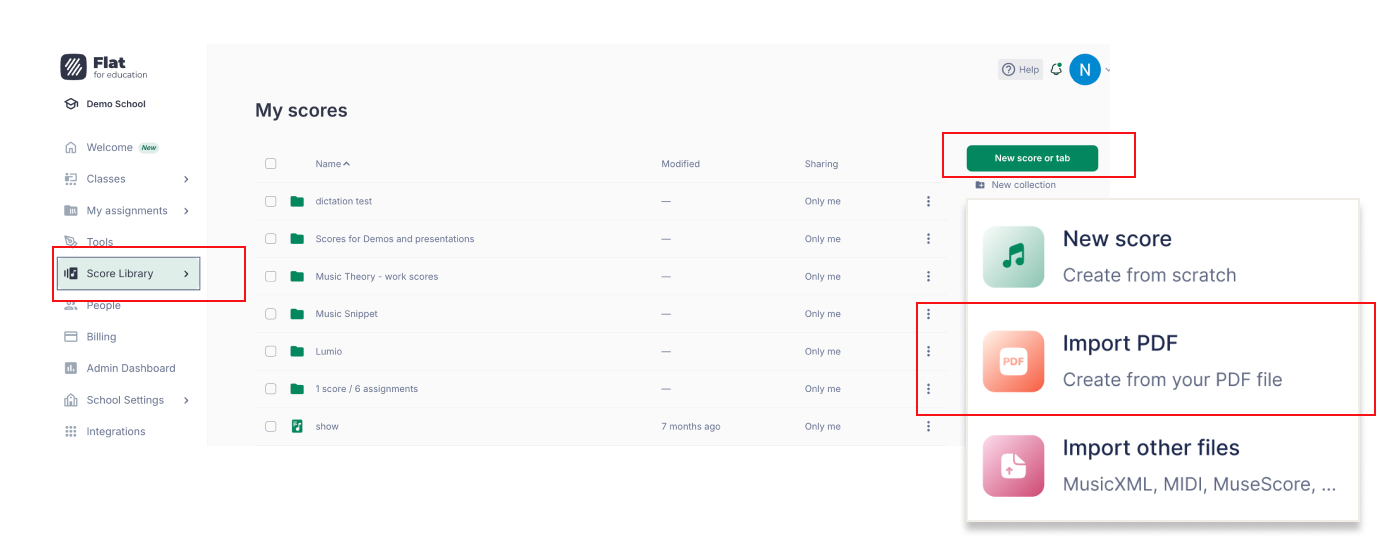
This feature is available exclusively for teachers with an active paid or renewed subscription (it's not included in a free trial). You have a total limit of 100 pages per user, with a maximum of 10 pages per single import.
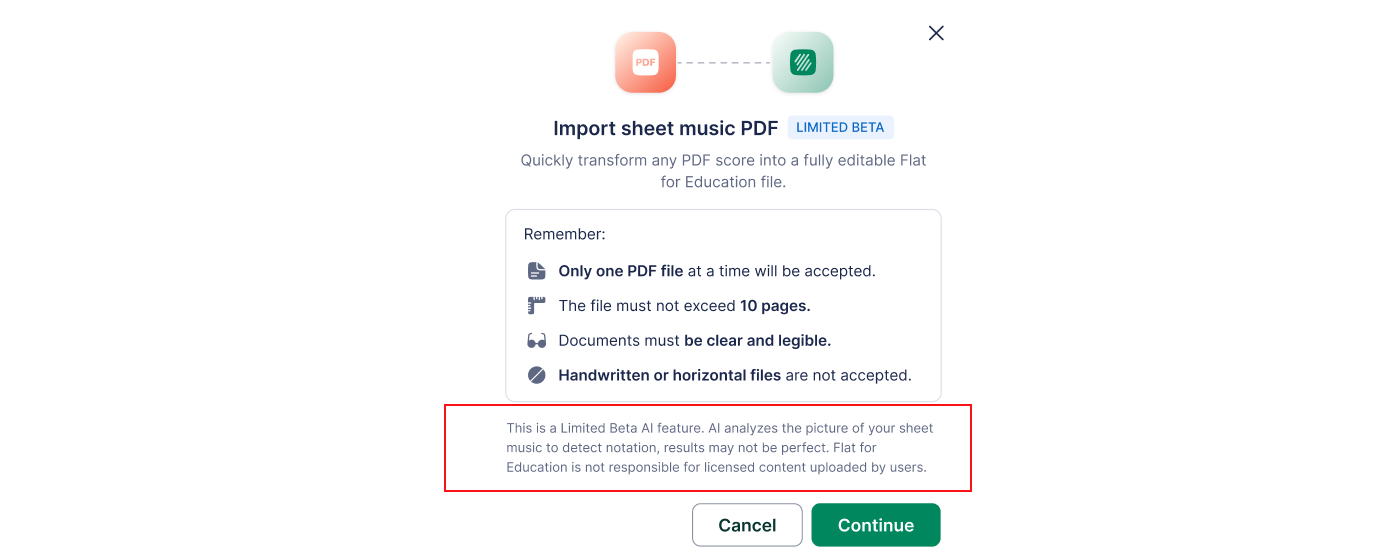
Best practices for importing a PDF score on Flat for Education
To ensure you get the best possible results with our PDF import feature, we recommend keeping your source files as clean as possible. The cleaner your PDF, the better the conversion will be.
For best results, your PDF should contain:
- Clear, horizontally-oriented musical staves.
- Standard music notation and symbols.
- Only one musical part per PDF file, if the score is for a single instrument.
The following will negatively impact the conversion quality:
- Poorly scanned documents: This includes low resolution files, partially erased text, bent or wrapped staves, or scanning marks.
- Non-standard music notation: The tool may not accurately recognize handwritten music, complex contemporary notation, or graphic notation.
- Unsupported score types: Chord charts, lyrics with chords, and tablatures without musical staves will be ignored.
- Inconsistent formatting: Problems can occur with scores where the number of staves changes throughout the piece, or where key signatures are not repeated on every system.
- Complex layouts: Avoid importing "double-page scores" on a single PDF page or scores with barlines only in the inter-staff space.
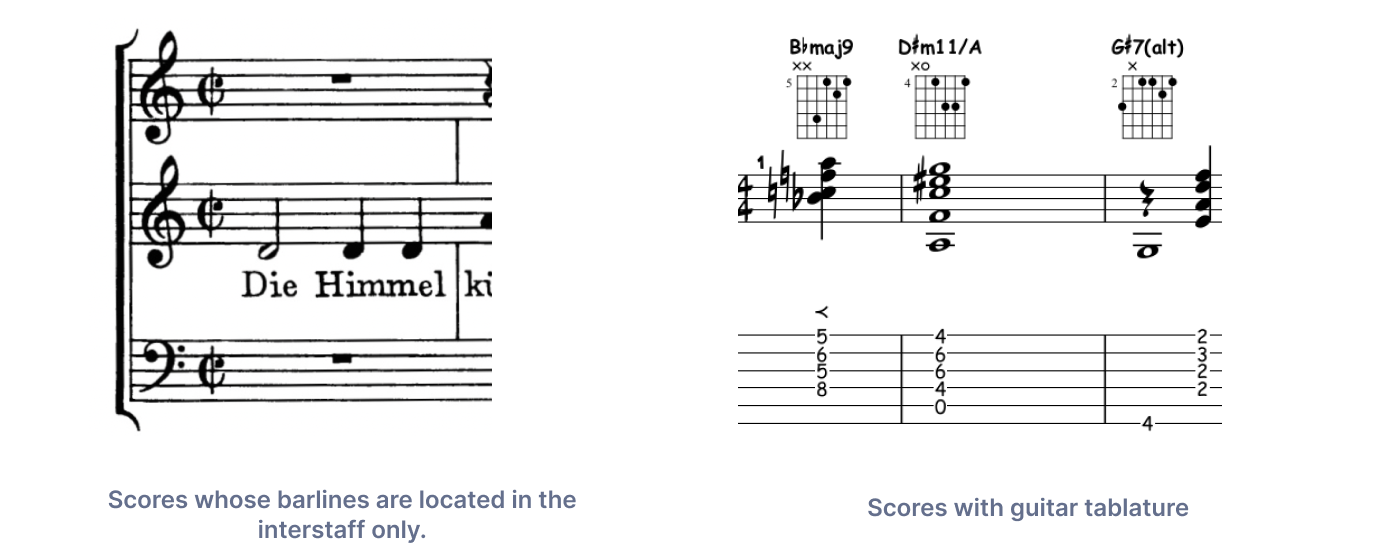
Specific elements that may not be recognized:
- Noteheads other than regular, cross, harmonic, and triangle shapes (e.g., diamond, slash, arrow).
- 4- and 3-line percussion staves.
- Scores where instruments have different staff sizes, as the algorithm focuses on the larger staves.
- Staves containing polyphony (multiple voices on the same staff), which can lead to rhythm errors.
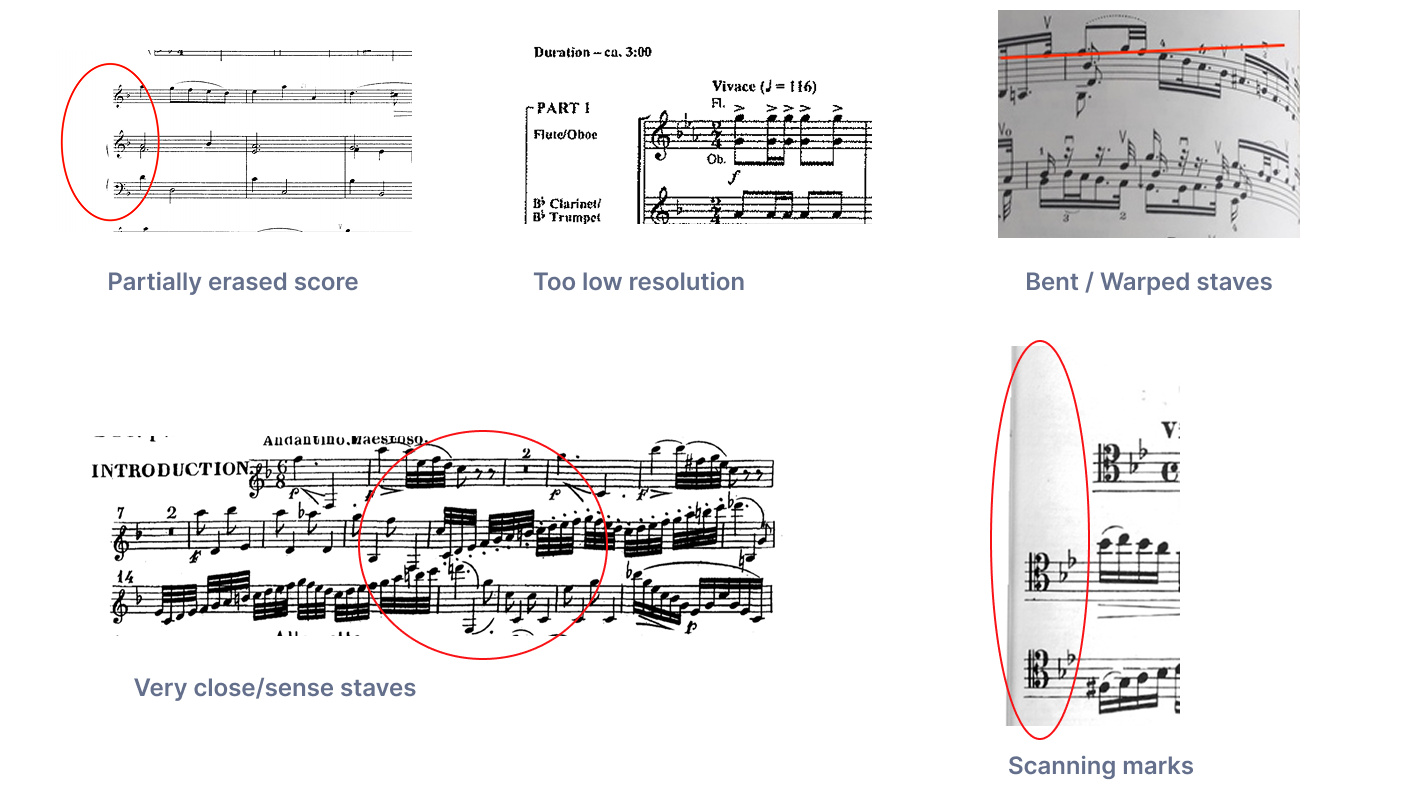
2. Import MusicXML and MIDI files
We support MusicXML (xml / mxl) and MIDI (mid / midi) files, and recommend you to use MusicXML files if you import sheet music from another software (you will have the exact music notation imported to Flat).
You can also import the following non-standard files formats to Flat. Please note that we don't offer an official support for them, they are provided to help you importing your existing files.
- MuseScore: mscz
- Guitar Pro files: gp (v7 and v8), gpx (v6), gp5, gp4, gp3
- Power Tab Editor: ptb
Import and edit your MusicXML and MIDI files online with Flat for Education
Go to My Library, then drag & drop your XML/MXL file. You can also click on the Import a score or tab button, or New score or tab and choose Import your creation:
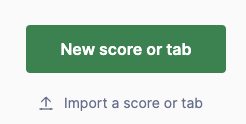
Choose your file(s) to import, and they will be directly added to your Flat for Education's score library.
You can export your scores back in MusicXML from Flat and open them with most softwares available on the market.
How to export your files from another software?
Need help to export your files from another software and import them to Flat for Education? Check out the dedicated help pages below: